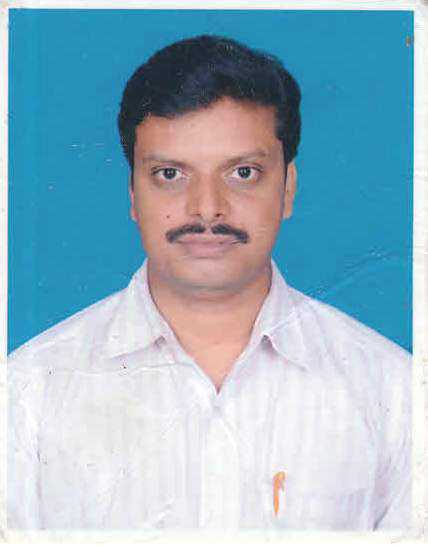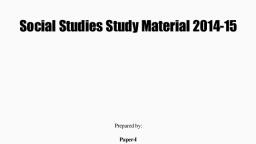Page 1 :
India – Relief features, , Mapping skill AS 5, , Location of India, , 1. India is located in NorthEast part of the world., 2. India is located in Asian, continent., 3. India is located in, Southern part of Asia., 4.Indian main land is, extended in between, Tropical and Temperate, regions., , Look at the world map and write a few lines, about India’s location with reference to the, places marked on this map?
Page 2 :
4, , 1, , 1.Bay of, Bengal, 2. Indian, ocean, 3.Arabian sea, 4. Land, , 3, 2, , Why do we often use the term, “Indian Peninsula” ?, , 1. A piece of land covered by water on three sides and one side by land is called, a Peninsula., 2. India is often termed as Peninsula because it is covered by Bay of Bengal on, east, Arabian sea on west and the Indian ocean on south and North side by land.
Page 3 :
The central longitude 82’ 30’ E of India is IST . It is forward of GMT, with 5 ½ hours., , 1, , 2, , 1. Imphal. 2. Ahmadabad., 1.Impal is the capital of Manipur state which is in eastern part of India., 2. Ahmadabad is located in Gujarat state which is in western part of, India., Due to difference in rotation time ( 4min) of the Earth from one, longitude to other longitude from west to east , the eastern parts, will get rising and setting times first than western parts.
Page 4 :
DRP, , 1.Longitudinal, distance, 2.Latitudinal, distance, 3. Longitudinal, extension, 4. Latitudinal, extension, 5.Palk strait, , 1. Name the states through which the Tropic of Cancer is passing?, 2. Name the states through which the IST (82.30Min) is passing?, 3. Name the frontier countries of India ?
Page 5 :
200, MIL, , Geological background, ANKARA, , COLLISION, , GONDWANA, , 1. Formation of the, Himalayas, 2. Formation of the, Northern plains or, Indo – Gangetic, plains
Page 6 :
The Relief Divisions of Indian, landmass, , 1. The, Himalayas, , 2. The IndoGangetic plain, , 3. The, Peninsular, Plateau, , 4. The, Coastal Plains, , 5. The Desert, , 6. The Islands
Page 7 :
1, 5, , 2, , 4, 3, 6, , 4, 6
Page 8 :
1.If the Himalayas would not have, been in its present position how, would be the climatic conditions of, the Indian sub continent ?, 2. What is the impact or influence of, the Himalayas on Indian agriculture?, , Longitudinal distance , Altitude and Width of the Himalayas., Compositions of materials., Comparisons of three ranges., Different local names of the Himalayas, Different land features of the Himalayas
Page 9 :
1. The Himadri or the Greater Himalayas, a. Continuous, b.Highest peaks, c.Average elevation 6100mts, d. Composed of snow and ice, e.Glaciers, f. Sources for the perennial rivers, 2. Lesser Himalayas or Himachal range, a. Most rugged relief, b. Composed of Compressed rocks, c. Average height 3700 – 4500 mts, d. The pirpanjal and the Mahabharata ranges, e. Kashmir, kulu and kanga valleys, , f. Simla, Mussorie , Nainital, Raniket hill stations, g. Evergreen forests, , 3.The Shivaliks or outer Himalayas, a. Different local names ---- Jammu , Mishmi and Cachar, b. Average height 900 – 1100 mts and width 10 -50 kms, c. Composed of gravel and alluvium, , d. Popular for DUNS – Dehradun , kotli Dun and Patli Dun
Page 11 :
Reason for, monsoon, type of, climate, , Act as barriers, , India, remained dry, Source of, Perennial, rivers, , The, Himalayas, , Form fertile, northern, plains
Page 13 :
The Himalayan, Rivers, , 1.Bhabar, , 2.Terai, , A narrow belt of 8km, – 16kms formed at, foot hills of Shivaliks, with gravel and Pebble, sediments, , A swampy and Marshy, region, , Indo- Gangetic plains have, high density of, population. Find the, reasons., , 3. Alluvial, plain regions, , Due to, Partition, Once a thick Forest region, now Agriculture zone, , Migrations
Page 14 :
The, Peninsular, Plateau, , Composed of Old, Crystalline , hard, Igneous ,, Metamorphic rocks., , Slightly tilted, towards East, , The southern most, tip Kanyakumari, , formation of Black, soils due to volcanic, activity, , Western and, Eastern Ghats edges, , Found Metallic and, NON- metallic, minerals., , The Chota Nagpur, plateau rich in, minerals, , 1. Dry region, 2. Rivers non- Perennial, 3. Second crop based on tube well, – tanks.
Page 15 :
Q. Plateau regions in India do not support agriculture, as much as the plain regions. What are the regions ?, , The, Peninsular, Plateau, divisions, , The central high, lands or The, Malwa plateau, , Malwa plateauwestern part, , Chota Nagpur, plateau – East, part, , 1. Dry region, 2. Rivers non- Perennial, 3. Second crop based on tube, well – tanks., , The Triangular, land mass or The, Deccan plateau, , Western Ghats, , Eastern Ghats, , Nilgiris
Page 17 :
The longest canal in, India --- Indira, Gandhi canal (650, kms) – main source, for Agriculture in, Desert, , The Thar Desert, , Receives very, low rainfall, 100 -150 mm, , Leeward side, of Aravalis, , Sandy plains, and rocky, outcrops, , Western, Rajasthan, , Arid climate, , Low vegetation, , Streams, appear only in, Rainy, , The only river, LUNI ---- Does, not reach sea
Page 18 :
How are the Eastern coastal plains and the Western coastal plains similar or, different?, , The East Coast Plains, , The West Coast Plains, , 1. Located along the Bay of Bengal., 2.Extends from Mahanadi ( Odisha) to Cauvery, (TN)., , 1.Located along the Arabian Sea., 2.Extends from Rann of Kutch to Kanyakumari., 3.It is a narrow coast., , 3. It is a wide and fertile coast., 4.Even Deltas formed by major rivers Godavari,, Krishna and Cauvery., 5. Chilka (Odhisha) ,Kolleru and Pulicat lakes, (A.P)located., 6. Fishing and Agriculture major activities., , 4.Uneven and broken by hilly terrain., , The major divisions, , 1. The Northern part --- Konkan coast, (M.A GOA)., 2. The middle part--- Canara coast ., ( K.A)., , 3. The southern part --- Malabar coast (, Kerala), , How do, deltas, support, Agriculture, like IndoGangetic, plains?, , The major divisions, 1. The northern part --- Utkal coast (, Odhisha), 2. The middle part --- Sircar coast ( A.P), 3. The southern part – Coramandal (TN)
Page 19 :
The Islands, , The Lakshadweep, , The Andaman and Nicobar, 1. Located in Bay of Bengal., , 1. Located in Arabian sea., 2.These are of Coral origin., 3.Area is 32 sq.kms., 4. Famous for flora and fauna., , 2.Elevated portion of Mountain Arkan Yoma, 3.These are of Volcanic origin., , 4.The southern most tip of India – Indira, point submerged in 2004 Tsunami found in, Nicobar islands., , How are the Andaman and Nicobar islands and the, Lakshadweep are similar or different ?
Page 20 :
Map Pointing key points, • 4 marks question., • Major map pointing questions are from this chapter., Some of them are……., 1.The line passes through centre of the country- Tropic of Cancer., 2.The IST of India – 82 ½ East Longitude., 3.The younger folded mountains --- the Himalayas., 4.The most ancient blocks on the Earth’s surface --- The peninsular plateau., 5.The parallel ranges of the Himalayas– the Himadri, the lesser Himalayas and Shiwaliks., 6.The northern plains --- Indo – Gangetic plains., 7.The strait between India and Srilanka --- Palk strait., 8. The triangular shape landmass– the Deccan plateau., 9.The plateau rich in minerals ---- the chota Nagpur., 10.The southern most tip of the peninsular plateau--- Kanyakumari., 11. The southern most tip of India --- India point ( Nicobar island)., 12.The north western portion of the peninsular plateau--- the Malwa plateau., 13.The highest peak in peninsular India or South India .--- Annaimudi., 14. The highest peak in India --- K2., 15. The leeward side of Aravalis--- the Thar Desert., 16.The northern, middle and southern parts of the west coast---- Konkan, Canara , Malabar., 17.The northern , middle and southern parts of the east coast--- Utkal, Sircar, Coramandal., 18.Lakes in A.P– Kolleru , Pulicat., 19. Lake of Odhisha--- Chilka., 20. The Volcanic origin Islands --- Andaman and Nicobar, 21 The Coral origin Islands--- Lakshadweep..














